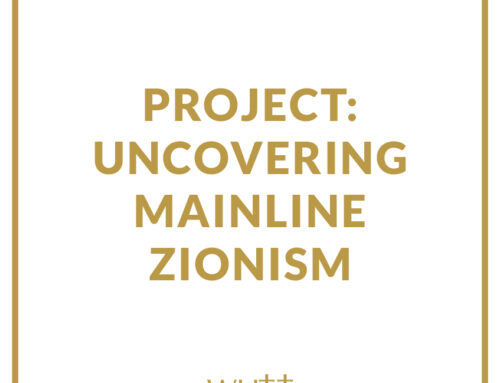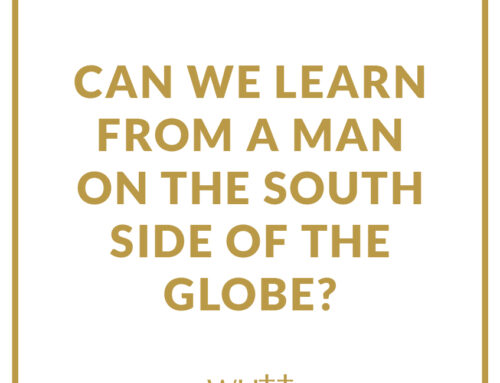Those familiar with the cause and effect view of history know that things are not always what they seem. Behind every political debate, there is often the undercurrent of the real fight.
Just recently, for example, Tom Selleck was attacked on the Rosie O’Donnell show because he had appeared in a National Rifle Association billboard advertisement. At one point during his interrogation, he said, “You don’t really believe that the Constitution included the ‘right to bear arms’ for hunting purposes, do you?”
Sadly, most of America had no idea what he was talking about.
Today, I am writing for those who know exactly what he was talking about. For while we fight to preserve the U.S. Constitution, and while we fight the enemies opposed to this purpose, a much more insidious process is underway.
Over the last decade or so, a new, worldwide frontier has emerged. It started out as an obscure, defense-department-funded communication network — now it has evolved into a global village known as the Internet.
For those who do not know, the “Internet” is exactly that. It is a network of private computers and private networks of computers that are simply inter-networked together.
Recently, the Internet has exploded, with over 92 million people sharing this wonderful resource. But as this growth continues, the Internet has started to impinge upon the real world. In fact, some estimates attribute over 30% of the growth in GDP directly to the Internet.
As this growth has escalated, and as business has started to flourish on the Net, conflicts have started to occur. Conflicts over content, conflicts over use, conflicts over privacy, and conflicts over intellectual property.
So how do we resolve these conflicts?
Who is in charge of the Internet?
When the Net started, it was obviously an U.S. creation. But as the Net assumed a global user base, the foreign users of the Net had no obligation to adhere to U.S. decisions. Likewise, U.S. users had no obligation to adhere to foreign decisions. Total freedom, and to some degree anarchy, was the result.
In an attempt to fill this power vacuum, a small group of people started a process to assume authority over the chaos. The first attempt was known as the gTLD-MoU. It was drafted by the Internet Assigned Numbers Authority (IANA), the Internet Society (ISOC), the World Intellectual Property Organization (WIPO), and the International Telecommunications Union (ITU).
Unfortunately, the plan they developed could have been written by Marx himself. It featured a small policy board, with unlimited powers, with no sunshine provisions, established under Swiss law, to administer the entire global name space.
[There are three main areas under which control over the Internet can be achieved — Domain Names, IP Addresses, and Protocol Parameters. The gTLD-MoU focused on Domain Names. The White Paper focuses on all three.]
Fortunately, there was enough opposition to the gTLD-MoU that the U.S. Government was forced to intervene. First, a multi-departmental group of the U.S. Government known as the National Telecommunications and Information Administration (NTIA) started to hold meetings. Then Congress, through the House Science and Commerce Committees, held hearings. Finally, the Executive Branch asked Ira Magaziner, President Clinton’s “Technology Czar,” to jump into the fight.
The result of all of these actions was ultimately known as the “White Paper”, Ira Magaziner’s consensus document. And while it addressed the most objectionable features of the gTLD-MoU, it was also written in a vague and ambiguous style.
This became obvious as the U.S. Commerce Department, under the direction of Becky Burr, proceeded to implement the White Paper through a most dubious process. Instead of interpreting the White Paper as an extension to the U.S. Constitution, she allowed a very small group of people to position themselves as the new global government for the Internet. They are known as ICANN.
ICANN, from its inception, has been fraught with controversy and claims of capture. First, the initial incorporators of ICANN used by-laws that were hotly contested as lacking in process, sunshine, and accountability clauses. Second, the initial Board members were presented as a fait accompli, without any justification for their selection or their appointment.
Who exactly comprises this board?
Esther Dyson, Interim Chairman, Chairman of EDventure Holdings
Geraldine Capdeboscq, Executive Vice President for Strategy, Technology and Partnerships, BULL (France).
George Conrades, Venture Partner with Polaris Venture Partners
Greg Crew, Chairman of the Australian Communications Industry Forum Ltd.
Frank Fitzsimmons, Senior Vice President, Global Marketing for Dun & Bradstreet
Hans Kraaijenbrink, Executive Board of the European Telecommunications, Network Operators association
Jun Murai Professor, Faculty of Environmental Information, Keio University (Japan)
Michael Roberts, Interim President and CEO of ICANN
Eugenio Triana, Past Deputy Director General in DG XIII (1994-98), European Commission
Linda S. Wilson, President of Radcliffe College
It should be noted that Esther Dyson was admitted to the Council on Foreign Relations in 1997, just before she became interested in the Internet governance debate. Coincidence?
But actions speak louder than appearances. And this board’s actions are right out of the Communist Manifesto. In the short time that this board has been in existence, they have:
1) Established a secretive method of decision making, one that features an open, public meeting the day before a secret and authoritative meeting where the Board makes all of the binding decisions affecting every Internet user in the world.
2) Established a Government Advisory Committee (GAC), which is a secret cabal of low ranking government officials, who meet in secret and make “recommendations” to the ICANN Board during their secret meeting.
3) Claimed ownership over the entire name space, and have threatened to force a U.S. based, public, for-profit corporation out of business.
4) Implemented a $1 per domain name tax, to fund their $6,000,000 budget. This tax was implemented without any community input, and without any representation offered to those who must now pay the tax. In other words, taxation without representation.
While this is a very small selection from a very large list, it does represent the current direction of ICANN. In one fell swoop, the Council on Foreign Relations will have achieved their New World Order over the very real frontier we call cyberspace.
Unless we act swiftly, ICANN will soon be entrenched as the de facto, worldwide government over the cyber-world we call the Internet.
But you can help.
First,
Congress is currently looking at the actions of ICANN. Congressman Bliley, of the House Commerce Committee, recently blasted ICANN for their current actions, and he will likely hold hearings in July. Write to your congressman, and support these hearings.
Second,
get the word out. Funny how the press will spend months covering President Clinton’s sex life, but will give virtually no coverage to the establishment of global Internet governance.
Finally,
get involved. The best place to participate in the debate is on the IFWP mailing list. To join, send a “subscribe list” command in the body of an email to majordomo@ifwp.org
In closing, the Internet is where we will work, play, and learn in the future — it is where we will live. We must protect this New World from those who would like to control it.
Freedom and liberty require constant vigilance — and action.
NOW is the time to act!


